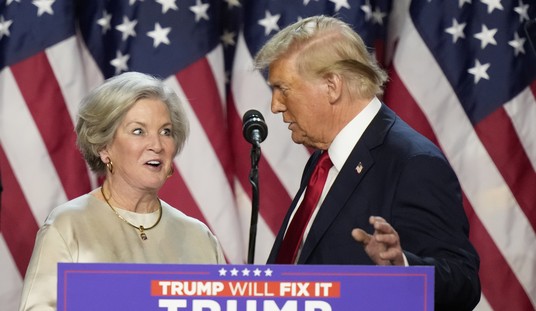The Trump Administration and congressional allies have moved out with a dedicated and steady purpose over the course of this year to dramatically roll back the taxpayer-funded government support structure that has allowed the “green” energy industry to flourish. For years, a host of federal incentives – from tax breaks to subsidies to other advantages – have allowed those pushing alternative energy like wind and solar to expand throughout the country at a breakneck pace.
But with new rules signed by the president on July 4 as part of the One Big Beautiful Bill – as well as via other regulatory changes enacted through executive orders – the window is now closing for those looking to erect new wind farms or giant solar arrays across the nation. Citizens concerned about an ugly and invasive boondoggle being planned for their area need to get educated, get aware, and get vigilant because the green energy industry is going to go hell for leather to get their projects in under the wire.
For many Americans, these policy moves have been a refreshing and welcome change. The more that Americans have come to understand the truth about the green energy industry, the less enthusiastic they have become about both its incomplete promises and its invasive presence in our backyard. The ungainly sight of hundreds of wind towers dominating a beautiful mountain ridge or vast expanses of extraterrestrial-looking solar panels – like something from an episode of “The X Files” – is really starting to turn many people off.
Other, more concrete concerns are becoming increasingly clear. For example, green energy solutions are not as eco-friendly as they’ve been made out to be. From adversely affecting bird migration to concerns about micro-drought and negative effects on human health, wind power generation has a significant cost. Often disregarded are social and cultural impacts as well. For example, a proposed 75,000 acre wind farm called the Rolling Hills Wind Project in upstate New York threatens to disrupt traditional ways of life for a lot of local communities in the region – from the monastics at a historic monastery (and the parishioners and pilgrims who visit and seek peace and solitude as they practice their beliefs), to traditional farming communities like the Amish. For all of the current talk about technology’s impact on society, nobody seems to want to talk about the social effects of giant wind turbines.
Of course, the enormous level of precious mineral mining needed to produce solar panels makes one wonder if the juice is really worth the squeeze. This is especially so considering the majority of panels are made in China – as are the majority of parts for wind turbines – the world’s most prolific polluter, and a country increasingly adversarial toward America. Additionally, the power generated from the green grid is not as bountiful, cheap, reliable, or consistent as it is often promised. In fact, even massive solar farms in the sunny California desert are going out of business prematurely simply because they haven’t lived up to the hype. If a giant solar farm can’t make it in the California desert, one wonders if a planned project called the Isabelle Creek Solar Project in the rolling farmland of western Wisconsin – cold and gray half the year during the fall and winter – is actually going to achieve what its promoters are pushing.
Recommended
Rural America is starting to see the dirtier side of so-called “clean energy,” given that it seems like the bulk of these installations are increasingly concentrated in the country’s heartland. Sure, landowners might make a few bucks for having solar arrays or wind towers on their property. But what happens when a green energy startup goes bankrupt, loses its financing, and has to shut down? Many of these companies are fast-buck, fly-by-night outfits with sketchy financing and shaky business plans. In fact, over 100 solar companies went out of business in 2024 alone – the worst year for business in the solar industry.
Or worse, what happens when the investors decide to cash out, skip town, and simply leave the defunct energy infrastructure in place to rust in the fields? In these cases, landowners are left with now useless land (which is nearly impossible to return to any agrarian use) covered with decaying and lifeless infrastructure. In some of these cases, like an abandoned solar project in Utah, the entire project was an enormous fraudulent scheme from the get-go. The old saying goes, “If it sounds too good to be true, it probably is.”
As you can imagine, many of the companies behind these projects are foreign-owned or have major foreign links. For example, the company behind the Rolling Hills windfarm is 50 percent owned by Abu Dhabi Future Energy Company PJSC – Masdar, out of the United Arab Emirates. The other 50 percent is owned by Igneo Infrastructure Partners, a subsidiary ultimately owned by Mitsubishi UFJ Financial Group (MUFG), a Japanese global financial services group.
Of course, they all have a formula for where they seek to set up shop – targeting regions with lots of land, often in economically depressed areas where the promises of wealth and tax revenue seem like a really good deal. Add the fact that small communities simply don’t have the lobbying power, connections, organizing strength, or cash to push back, and these deep-pocketed entities are often able to just steamroll concerned citizens. Who can speak with force and authority for the interests of people like those in upstate New York, western Wisconsin, or elsewhere in America’s quiet rural communities?
It is important to note that despite the positive policy moves now being enacted at the federal level, concerned citizens should brace themselves for what is probably going to be a desperate scramble on the part of these companies to get their industrial projects online before certain incentives expire. A lot of the business case for investment in green energy is built on federal incentives – and if they expire, the value proposition for the project weakens. Investors walk and put their money elsewhere. Frankly, many of these companies simply can’t exist without federal subsidies.
Looking ahead, for those apprehensive about mega green projects being planned for their neighborhoods, the next couple of years will be critical. It will be crunch time for companies to secure land contracts, financing, permitting, and initiate construction. You can bank on the notion that with time running out, green companies will be working overtime to take advantage of federal incentives. We must be alert to Green Inc.’s last dash land grab – you know it’s coming.
Tommy Sears is a political consultant with over 26 years of experience working in politics and policy. He has worked campaigns from school board to president of the United States.


